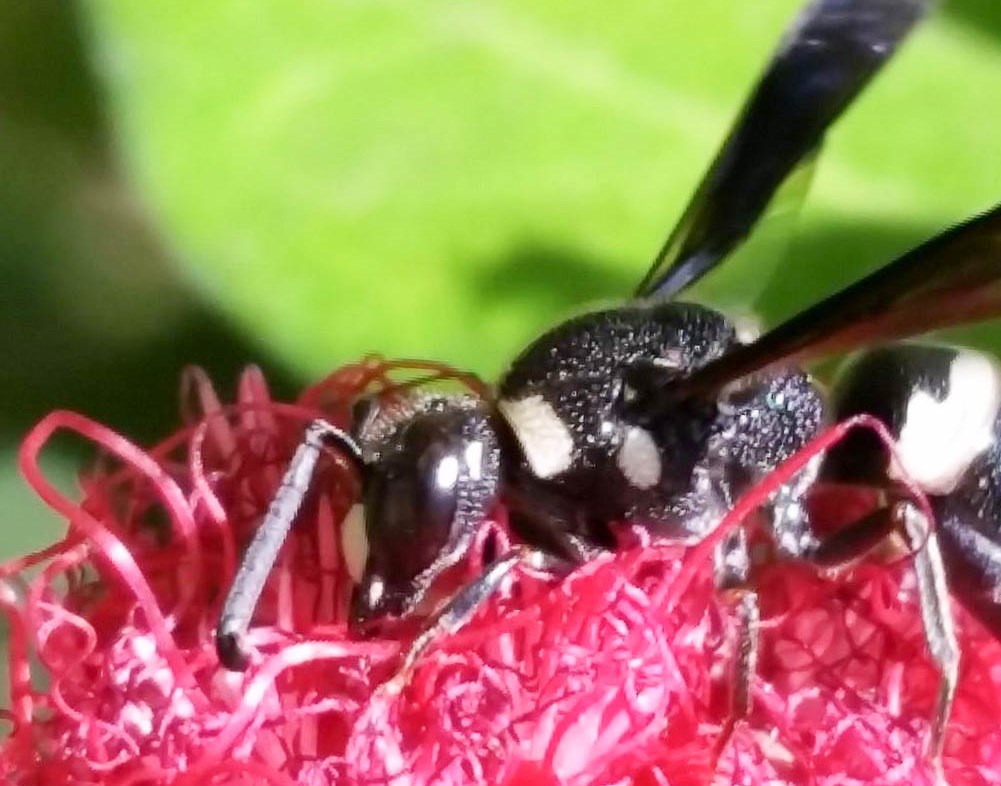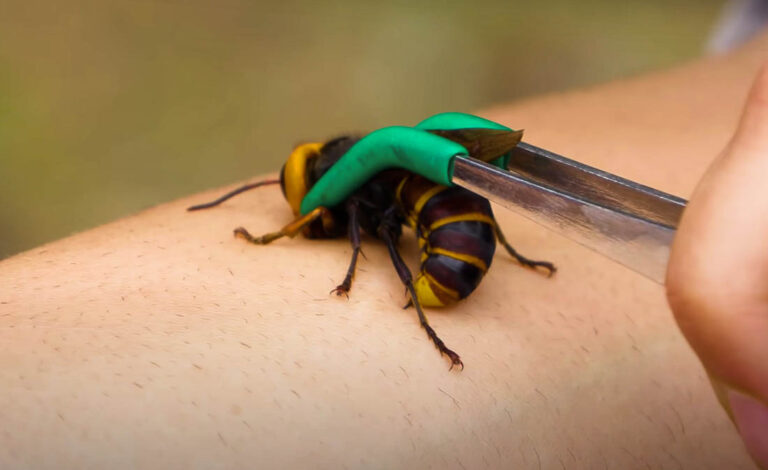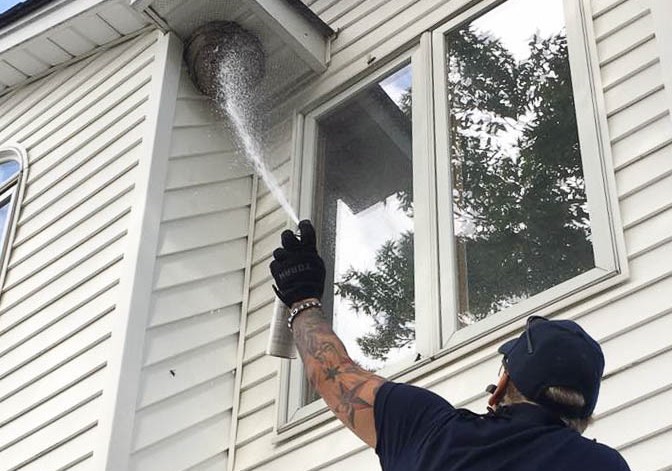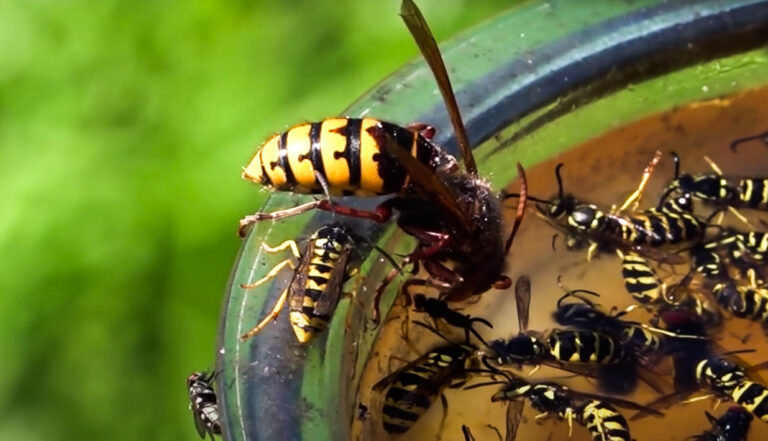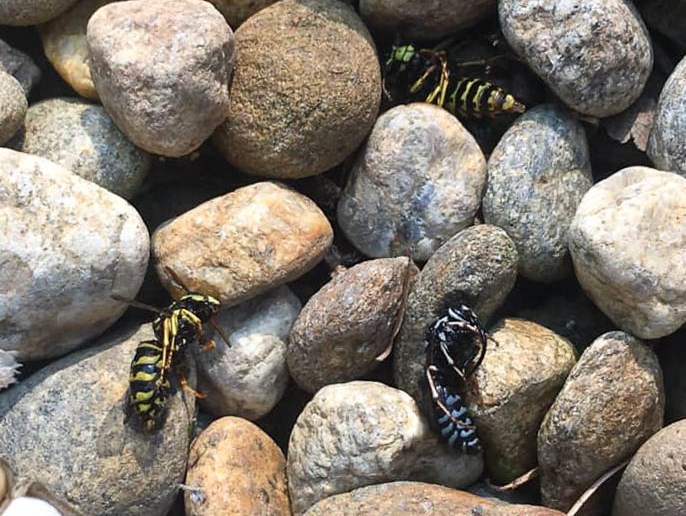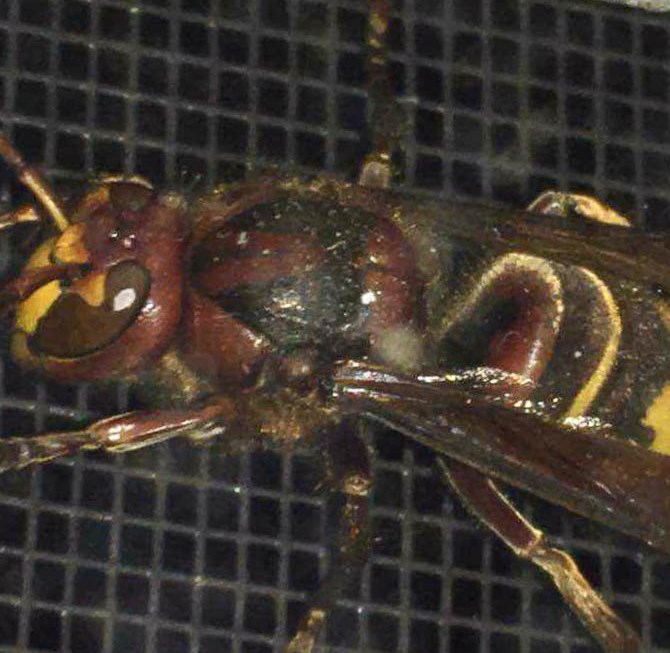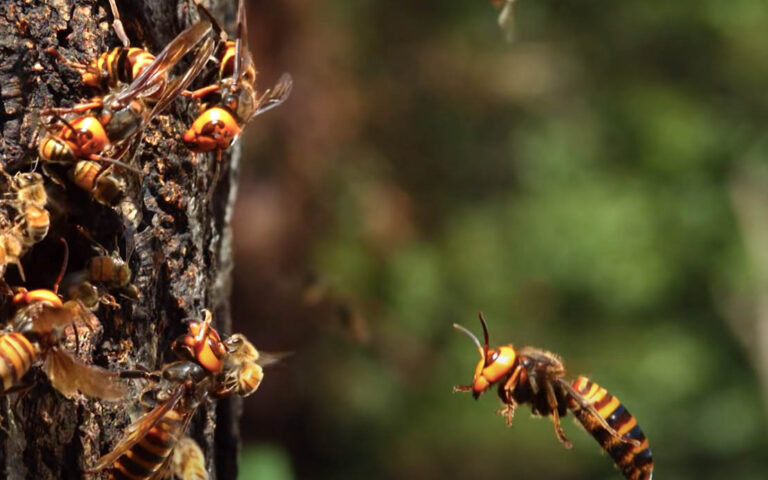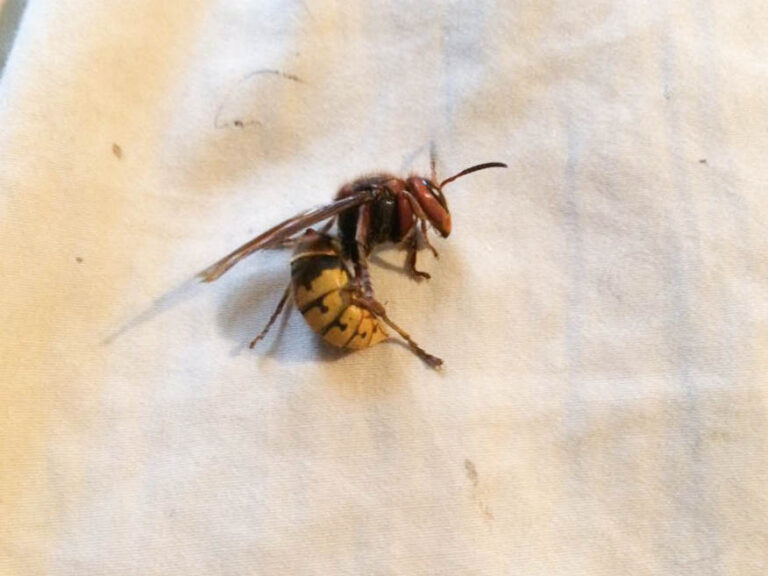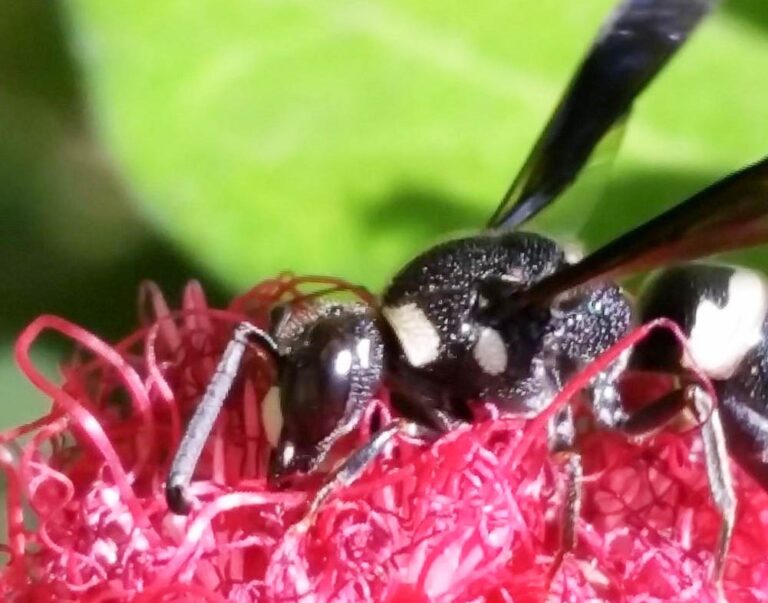About Bald-faced Hornets
About Bald-faced Hornets
The bald-faced hornet can be found in North America. It’s easy to spot this type of hornet by the paper nest they build. Bald-faced hornets are also known as white-faced hornets but with either name, they are not considered a true hornet, in fact, they are more related to yellow jackets instead of hornets.
Appearance
Bald-faced hornets have a distinct look about them. They are black with white marks on the front part of the head as well as the abdomen. The face of the bald-faced hornet features black eyes with white around them. The front wings are folded lengthwise when they are not flying. The other wings also run lengthwise when at rest.
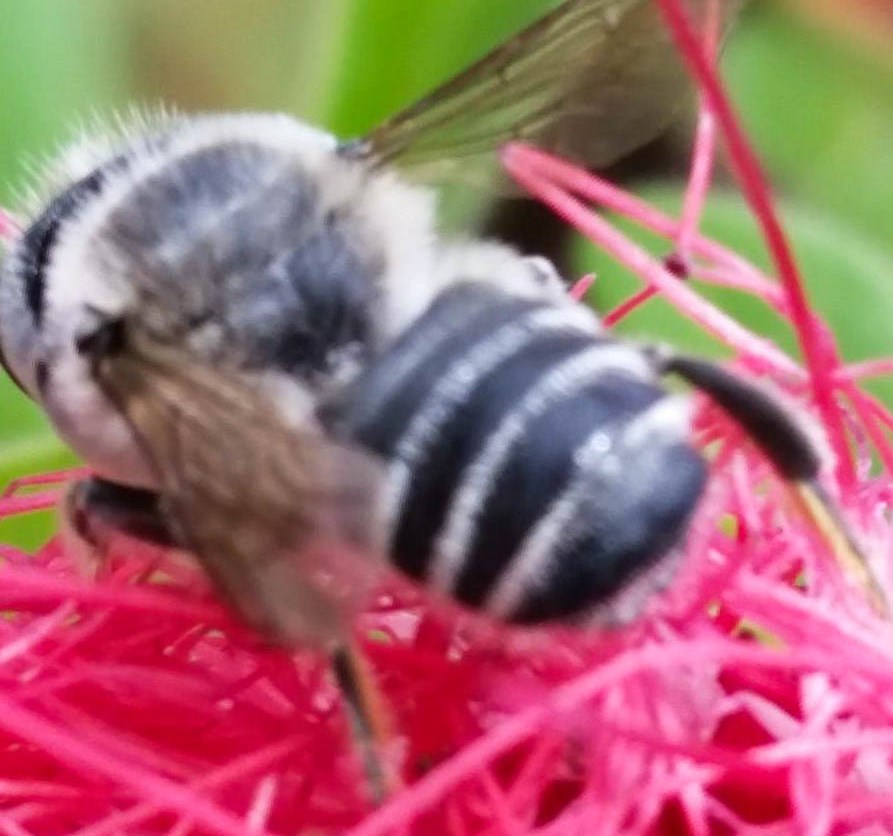
Behavior
Bald-faced hornets are very social and they thrive in a large colony. There is a queen hornet, drones, and busy worker hornets that all have a job to do each and every day in order to support their colony. The queen’s job is to lay eggs, and she can lay hundreds of eggs.
The drones are male hornets that fertilize the queen when it is time. The busy workers work throughout the day doing a variety of tasks that are needed to maintain the nest. This is how the hornets spend their spring and summer.
Then in late summer, the hornets will visit flowers and begin to collect the nectar as it becomes available in the flowers.
During the summer, the hornets will focus mainly on feasting on predators such as caterpillars, flies, and any soft-bodied insects. They will sting humans when they feel that the colony is threatened.
Life Cycle
There are four stages of the bald-faced hornet life cycle. Stage one is the egg, stage two is larva, stage three is pupa, and stage four is adult. A colony of bald-faced hornets will last one year. The queen is the only member of the colony that will survive through the winter. In early spring, the queen will emerge and prepare to build the nest from scratch because they cannot or will not use the same nest as previous years.
The queen will look for a new location, begin the process of constructing the basic nest and begin to raise all the sterile female offspring. The offspring will then help by making the nest bigger, look for food, and help the queen while she produces more eggs.
Around the middle part of summer, the colony is at its peak and there are between one hundred and four hundred hornets all living in the colony. When fall comes around the males and all the new queens will then mate before the males die and the queens hibernate in preparation for next year.
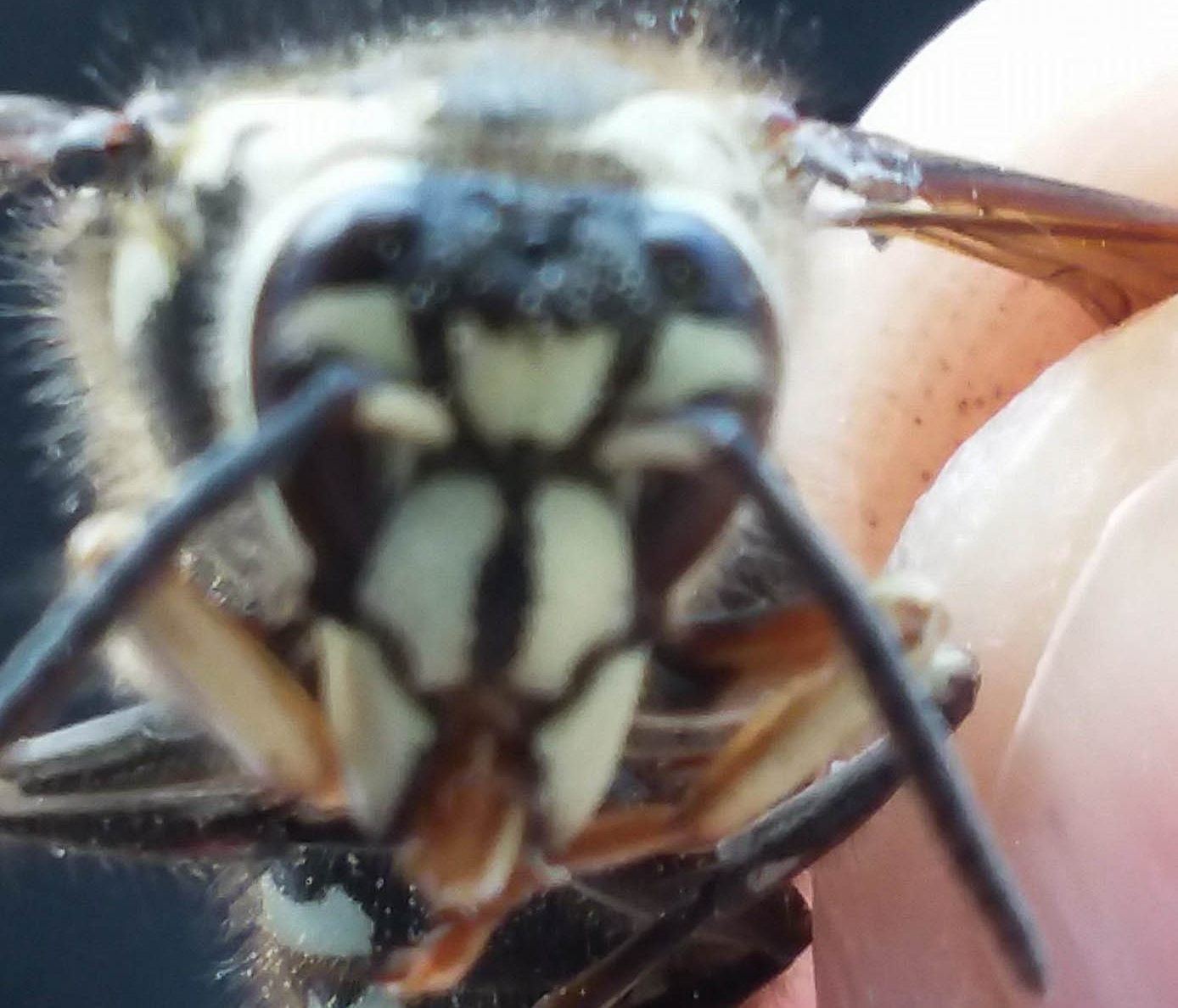
Habitat
Bald-faced hornets build a large sphere-shaped ball that they start building in the spring so it will be ready when they begin to have young. The total nest size can sometimes be up to three feet tall.
To build these nests, they begin in the spring with the queen collecting wood fibers to help make the nest. She finds these fibers from fences and houses. The paper nests are gray in color and can be seen hanging on branches in a tree. They may also be discovered on structures like barns or houses.
Once the queen finds the wood fibers to start the nest, the hornets will chew the fiber and mix it with their own saliva and then place it on the inside of the nest where it will become cells and resemble a honey bee comb.
There are three to four layers of comb found within a layer of outer shell. The only opening in the nest is found at the bottom of the nest. At the beginning of fall, the nest is abandoned and will eventually be torn down by birds and other animals that may be looking for food.
